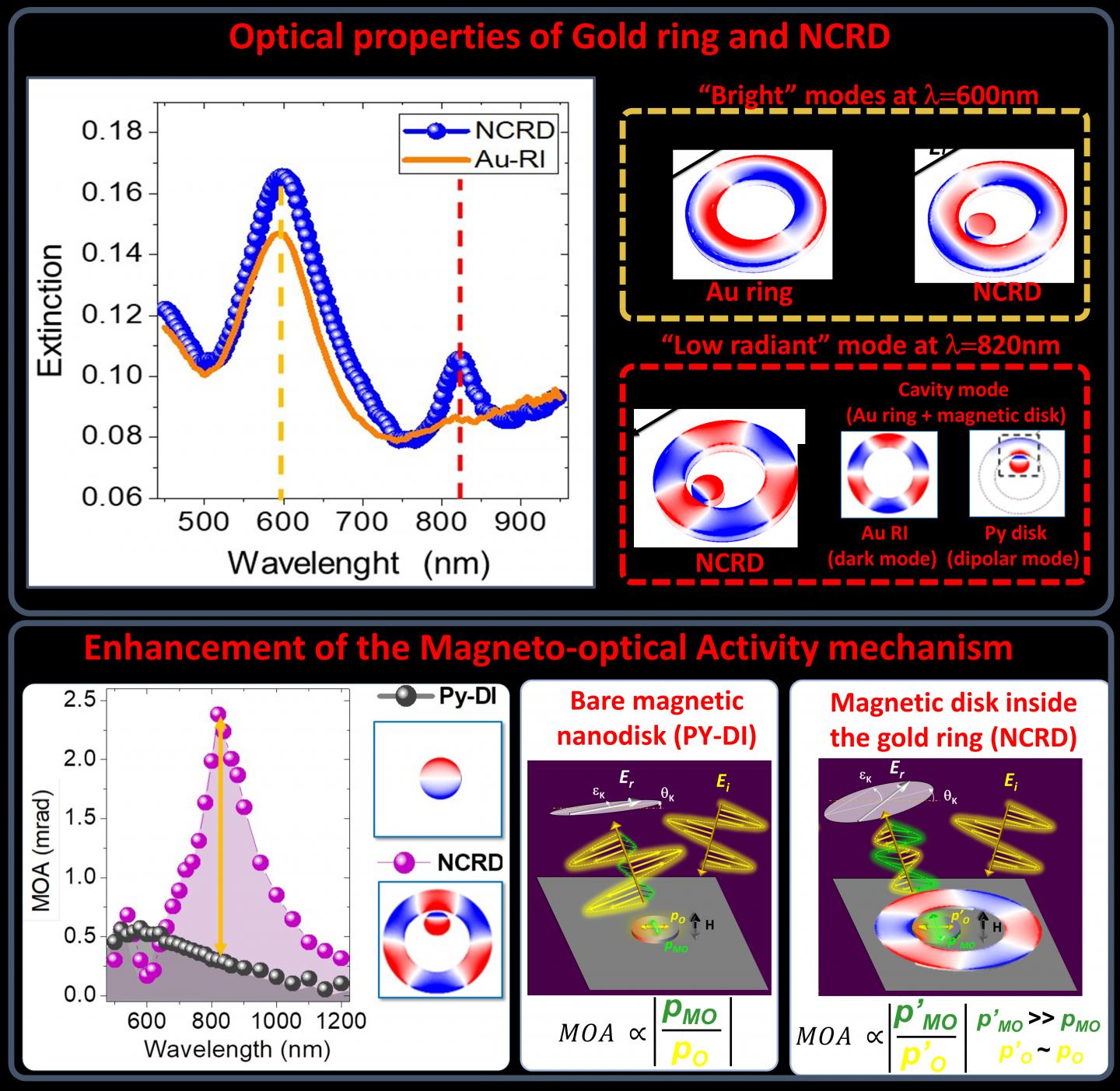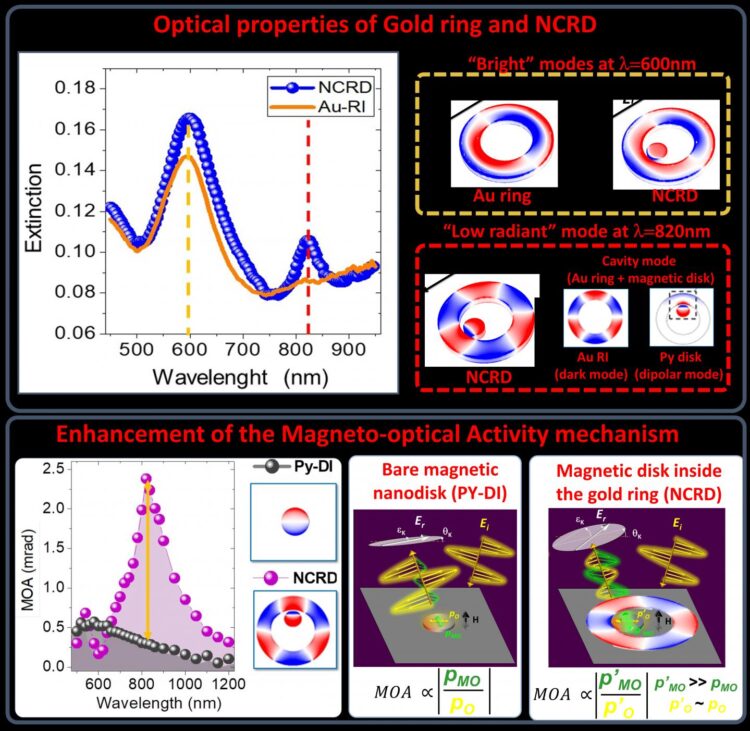
Credit: by Alberto López-Ortega, Mario Zapata-Herrera, Nicolò Maccaferri, Matteo Pancaldi, Mikel Garcia, Andrey Chuvilin, and Paolo Vavassori
Nanophotonics uses light polarization as an information carrier in optical communications, sensing, and imaging. Likewise, the state of polarization of light plays a key role in the photonic transfer of quantum information. In this framework, optical nanodevices enabling dynamic manipulation of light polarization at the nanoscale are key components for future nanophotonic applications.
Magnetic materials exhibit the so-called magneto-optical (MO) activity, arising from spin-orbit coupling of electrons, which results in a weak magnetic-field-induced intensity and polarization modulation (in the order of mrads) of reflected and transmitted light.
Magneto-plasmonics explores nanostructures and metamaterials that combine the strong local enhancements of electromagnetic fields produced by localized plasmon excitations, i.e., collective oscillations of the quasi-free electrons, with the inherent MO activity of the magnetic constituent to enhance the otherwise weak magnetic-field-induced polarization modulation.
Up to now, most studies on magneto-plasmonics focused on the excitation of bright (i.e. radiant) localized dipolar plasmonic resonances, known as LPRs, to amplify the MO response. Indeed, dimeric and multilayered hybrid noble/ferromagnetic metals structures as well as purely ferromagnetic nanoantennae have demonstrated the possibility to control and amplify the MO properties via plasmonic excitations. For instance, considering the archetypical case of a circular disk-like magneto-plasmonic nanoantenna, incident radiation of proper wavelength excites an LPR (Po in the figure). When the nanoantenna is “activated” by a magnetic-field (H), a second LPR is induced by the inherent MO activity (PMO in the figure.). This MO-induced LPR (or MOLPR) is driven by the LPR in a direction orthogonal to both H and the LPR. The ratio between the MOLPR and the LPR corresponds to the ratio between the response of orthogonal radiating electric dipoles that determine the magnetic-field induced polarization change of re-emitted light4. However, the generation of a large MO-induced electric dipole associated to the MOLPR results from a parallel enhancement of the electric dipole associated to the LPR. The simultaneous excitation of the LPR, radiating light with the incident polarization, and MOLPR, radiating light with a polarization orthogonal to the incident radiation, limits the maximum achievable enhancement of magnetic-field activated change in polarization of reflected and transmitted light. Due to this limitation of the MO enhancement exploiting bright dipolar resonances, amplifications up to about only 1-order of magnitude of the MO response have been observed experimentally, which are not enough for practical applications of magneto-plasmonics to active nanophotonics and flat-optics.
In a new paper published in Light Science & Application, an international team lead by the Nanoscience Cooperative Research Center, CIC Nanogune, Spain, had proposed and demonstrated a strategy to overcome the aforementioned limitation based on the excitation of hybrid high order multi-polar dark modes as a viable and powerful mean to amplify the magneto-optical activity of magneto-plasmonic nanoantennas and achieve an unprecedented active control of the light polarization under a magnetic field. The authors had designed a symmetry broken non-concentric magneto-plasmonic-disk/plasmonic-ring nanostructures in order to enable the free-space light excitation of multipolar dark modes in the plasmonic-ring as well as their hybridization with the dipolar plasmonic resonance of the magneto-plasmonic disk, leading to a hybrid multipolar mode.
The large amplification of the MO response of our nanocavity is the result of a strongly enhanced radiant MOLPR, which is driven by the low-radiant hybrid multipolar resonance instead of a bright LPR. In this way the amplification of the radiated light from the strongly amplified MO response is achieved avoiding a simultaneous large enhancement of radiated light with the incident polarization.
###
Media Contact
Paolo Vavassori
[email protected]
Related Journal Article
http://dx.





